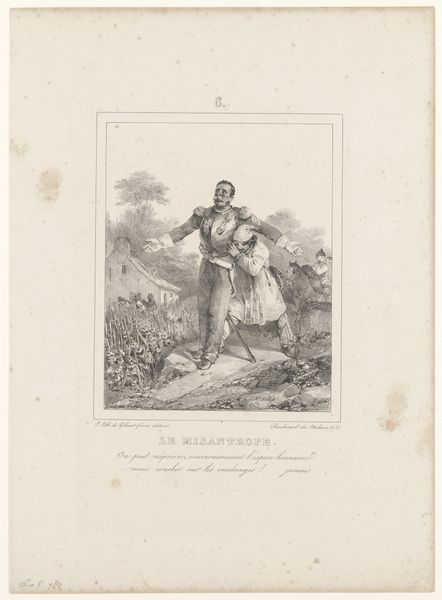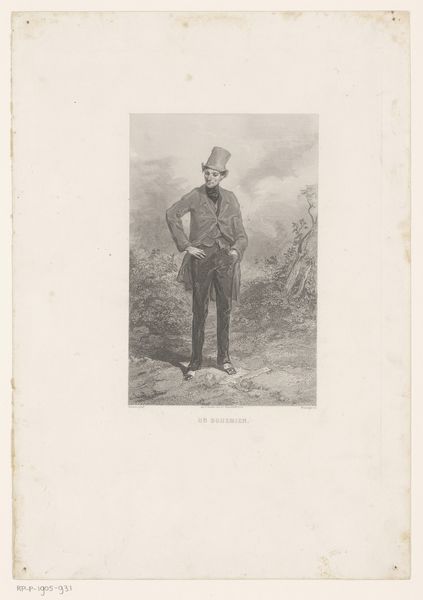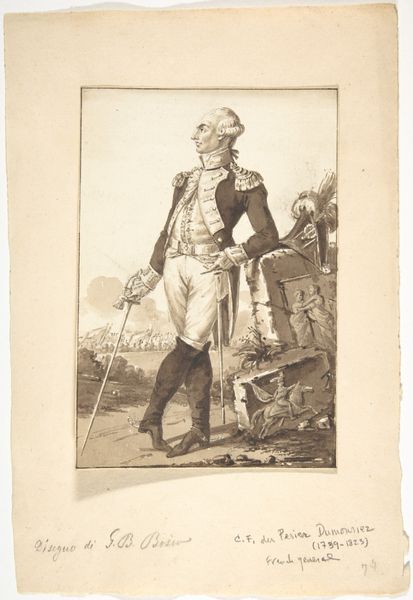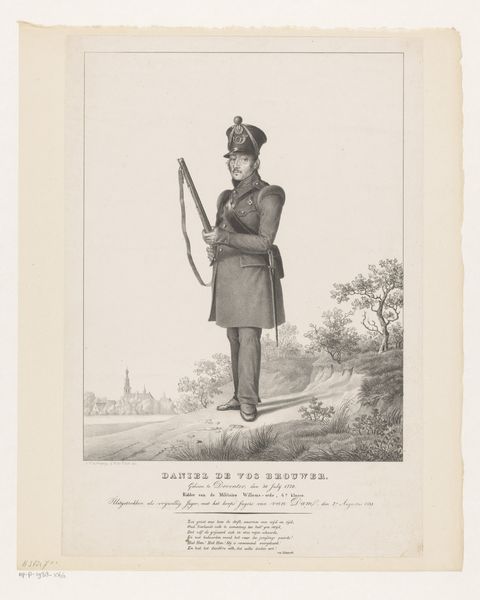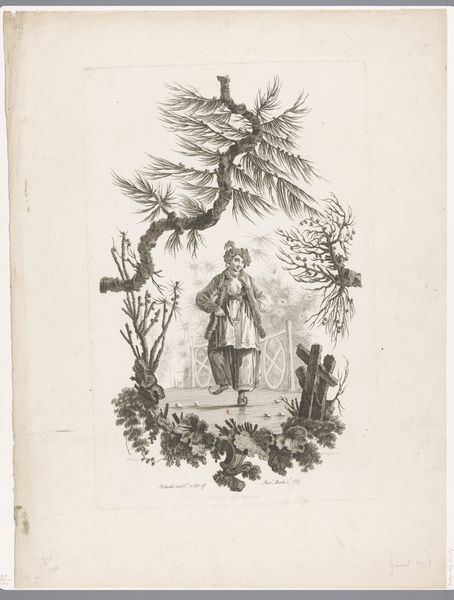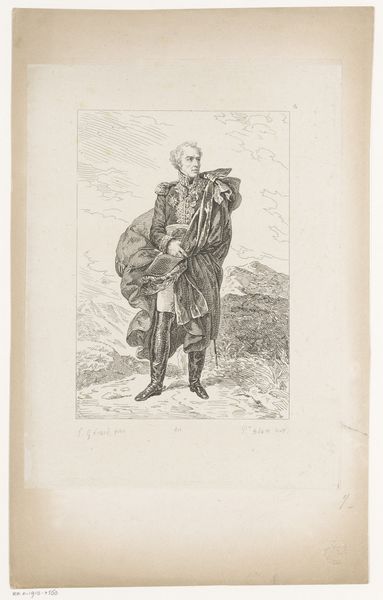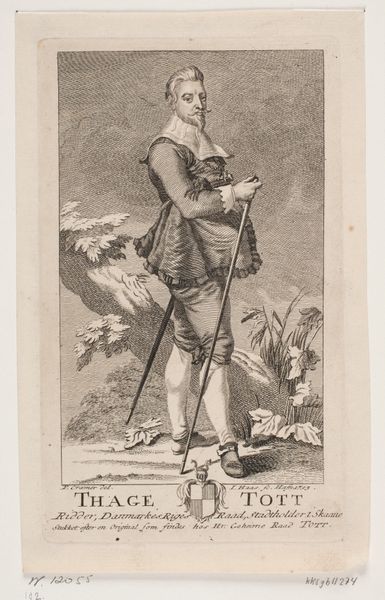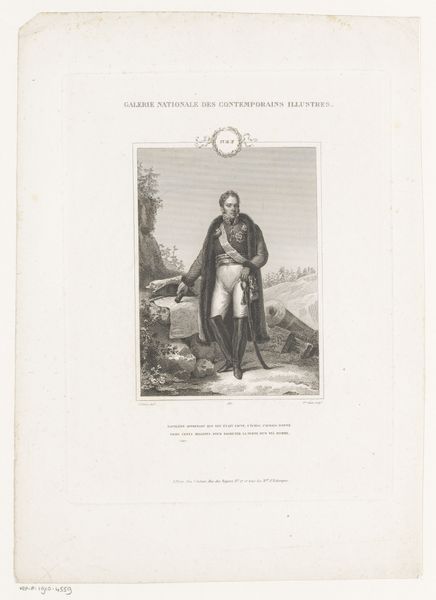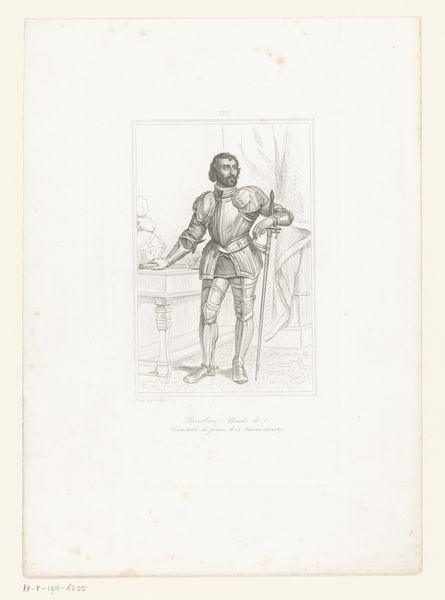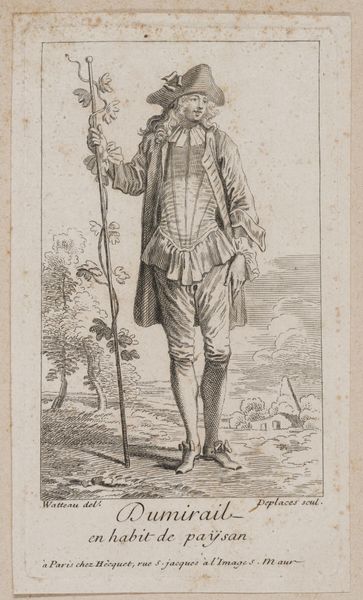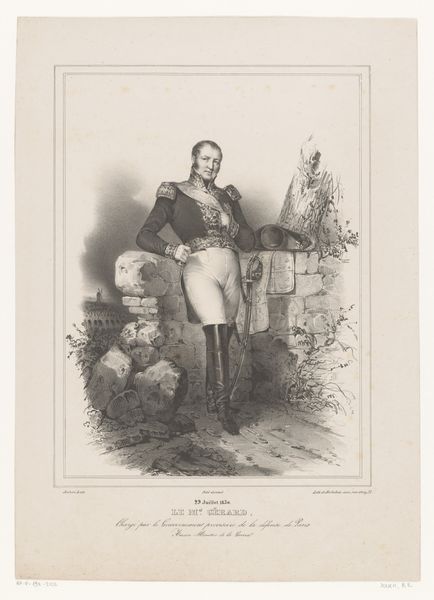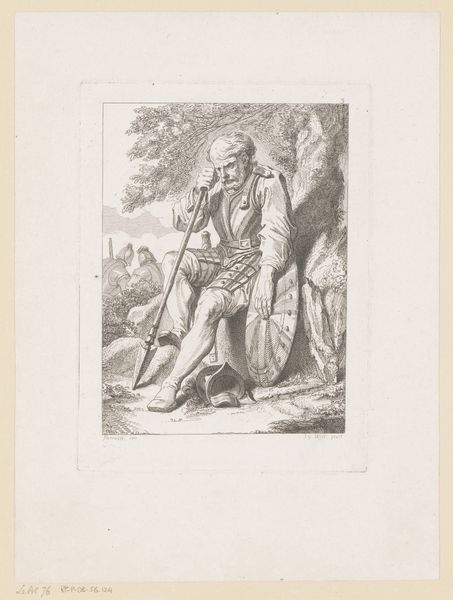
drawing, pencil
#
portrait
#
drawing
#
neoclacissism
#
pencil sketch
#
old engraving style
#
pen-ink sketch
#
pencil
#
history-painting
#
academic-art
Dimensions: height 319 mm, width 229 mm
Copyright: Rijks Museum: Open Domain
This is Amédée Félix Barthélemy Geille's portrait of Emperor Joseph II, made using engraving, a printmaking technique. Here, a design is cut into a metal plate, typically copper, and then filled with ink and printed. The linear quality of the print, its fine lines and shading, all result from the engraver's skilled manipulation of tools. We can appreciate the meticulous labor required to create this image. The engraver has not only depicted the Emperor and his garments, but also the textures of the landscape. Notice the precise detail in the rendering of the fur trim of the robe, for instance. Engraving has a long history, closely tied to the development of mass media. Prints such as this allowed for the widespread distribution of images. The print makes the Emperor accessible to a broader public, thus subtly shifting power dynamics. Looking at the details of production provides insight into the social and cultural meanings embedded in this portrait.
Comments
No comments
Be the first to comment and join the conversation on the ultimate creative platform.
